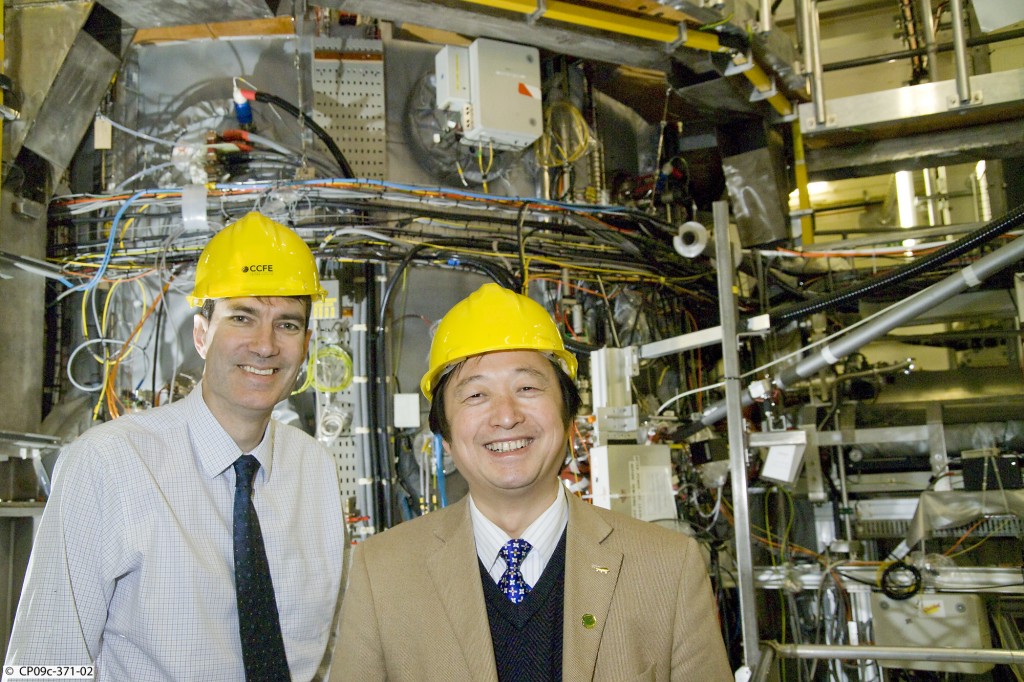ITER NEWSLINE
117
Fast Track not fast enough
Jennifer Hay, Culham Centre for Fusion Energy
Fast Track not fast enough

Professor Jiangang Li with Steve Cowley, Director of the Culham Science Centre.
During his visit he gave a talk on the present state and future plans of the EAST tokamak, the flagship of the Chinese fusion program. He had this clear message for his large audience—China needs fusion more urgently than any other country.
Following construction in just 5 ½ years at a cost of USD 20 million, EAST went into operation in 2006 with 20 diagnostics. By the end of this year that number will have doubled, covering all the key profiles. ITER-relevant work includes plasma control, ramp-up and down optimization and in particular, steady-state issues.
Professor Li described the so-called fast track to fusion power as "not fast enough." It is important to achieve a demonstration fusion plant, even with a reduced scope, as early as possible and China currently has some 50 to 60 staff working on future fusion power plants as part of its dynamic fusion program.
return to Newsline #117


